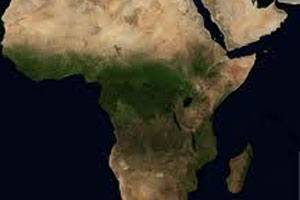
Turn back the hands of time to 1876. Europe is experiencing an economic, social and military revolution.
Nesbert Ruwo
King Leopold II of Belgium has just read the report that the mineral resources in the Congo Basin (modern day DRC) could provide a substantial return for anyone willing to take the risk and invest in the region.
Leopold wants his property in the basin to be internationally recognised. A European conference thereafter (Berlin Conference 1884-85) laid down the rules for the division of Africa.
By 1914, all African countries except for Ethiopia and Liberia had been “split and divided” among European countries. The need for raw materials and trade networks, among other reasons, drove this “scramble for Africa”. This was the then scramble for Africa.
Fast forward to 2014. Africa has attained political independence and has been de-colonised. Economic independence is yet to be achieved in most countries.
But Africa is experiencing a rapid rate of economic growth — supported by urbanisation, reconstruction, discovery of precious resources (like gas) and industrialisation. Only in 2000, The Economist called it “the hopeless continent” characterised by famine, wars, corruption and political instability and a decade later, in 2011, the same publication saw “Africa Rising”.
Once again, Africa is attracting increasing interest from the global investment community driven by surging demand for its resources.
- Open letter to President Mnangagwa
- Feature: ‘It’s worse right now than under Mugabe’: Sikhala pays the price of opposition in solitary cell
- Masvingo turns down fire tender deal
- Human-wildlife conflict drive African wild dogs to extinction
Keep Reading
The new interest is coming from notably the resource-hungry Bric countries, US, as well as Europe, who are all looking for raw materials and markets for their industries.
The rapid urbanisation and consumerisation in Africa has instigated the demand for modern goods and services such as mobile telecoms, vehicles, computing, entertainment gadgets and banking services.
Most of these goods and services are supplied by global businesses based in Asia, Americas and Europe. African Development Bank estimated that there were 350 million Africans in the middle income class in 2010 and this number is growing rapidly.
This class of people is driving the demand for modern goods in Africa.
The modern scramble for Africa is no longer military but mostly an economic power game.
This is being achieved through infrastructure investments (e.g. roads, dams, and power stations), funding at concessionary interest rates, aid and grants, and preferential trade agreements. Billions of dollars in investments and aid are coming into Africa.
Just as recent as August, Barack Obama hosted a US-Africa Leaders’ Summit — a summit focused on trade and investment and on strengthening partnership between Africa and the US. The US’s annual trade with the continent is estimated at about US$85 billion while that of China stands at US$200 billion.
It’s obvious that the US is playing catch-up in the new scramble for Africa.
China is leading the pack given its insatiable appetite for resources to support its rapid economic growth. The Bric countries are invested in or have interests in countries like Angola, DRC, Mozambique, Nigeria, South Africa and Sudan.
Given the potential within Africa, international investors are always scouting for the right investment country destinations. At a country-specific level, each country must provide the right environment to attract this global capital.
This includes the right policy framework and supportive legal and institutional frameworks.
South Africa, for example, with its developed infrastructure, regulatory and institutional framework, sees itself as a “springboard into Africa” for international investors looking to invest in the rest of Africa. Other African countries are also offering attractive propositions.
Countries like Kenya, Angola, Mozambique, Ghana, and Nigeria have become Africa’s international investment hotspots. It’s a “beauty contest” to attract international investors. As a country, where does Zimbabwe stand in the contest for global investments targeted towards Africa?
The future for Africa It is clear that Africa proffers huge opportunities for investors.
McKinsey Global Institute (2010) estimated that Africa owns 60% of the world’s total amount of uncultivated arable land, while the World Bank (2012) indicated that Africa needs annual investments of at least US$80 billion for infrastructure given the deficiencies in infrastructure development.
Africa also has massive untapped reserves of minerals like platinum, gold, oil, gas, copper etc, as well as impressive tourist destinations.
Fifty percent of the continent’s one billion people are under 24 years of age, making it the youngest market in the world.
Its population is estimated to double by 2050 while the middle income class is expected to balloon. Over 50% of the population will be living in cities by 2030. That is a huge potential that gets international investors drooling.
But the recent attention to Africa may not solely be based on a goal to improve the well-being of Africans, but on the need by the investor countries to secure a supply of raw materials for the industries and new markets for their goods.
Africa’s massive natural resource base and its youngest market status makes it a pretty much untapped continent. It is important that Africa benefit from the extraction of its resources.
African policy makers must be strategic when dealing with investor countries, especially on resource exploitation, environmental issues, sustainable development, and monopoly rights over resources. The focus should be on long-term sustainable economic and social development than on short-term gains.
Nesbert Ruwo is Zimbabwean-born investment banker based in South Africa. He can be contacted on: [email protected]











